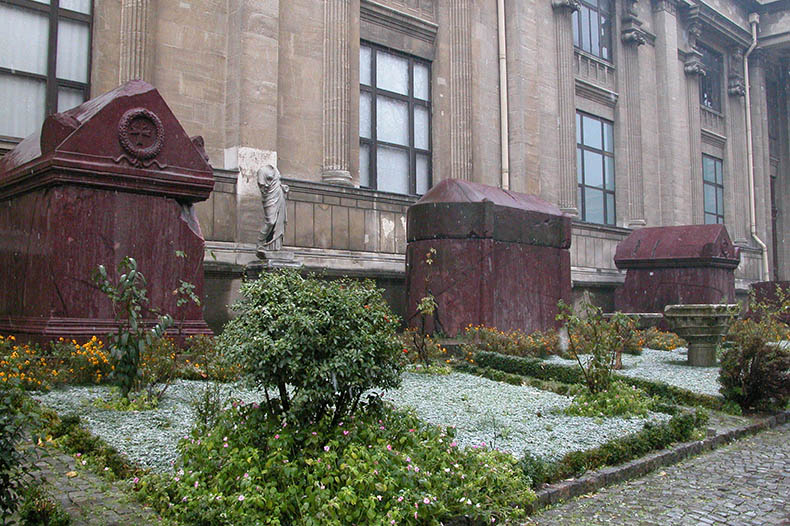
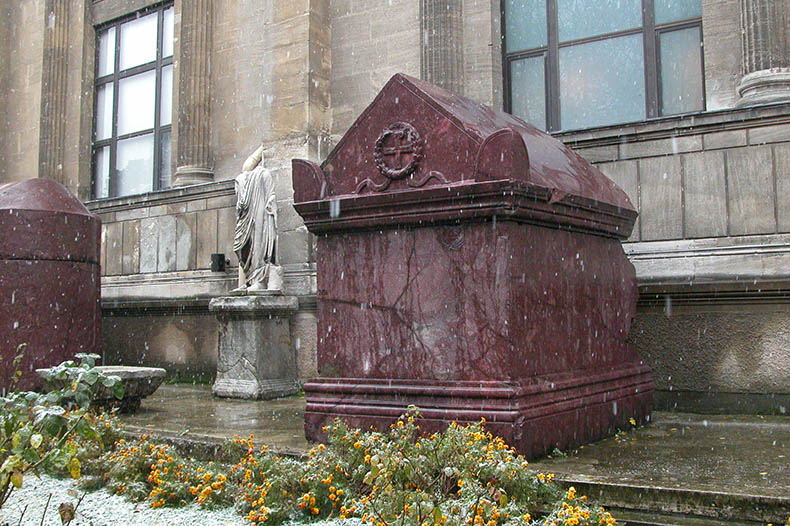
There are four Imperial sarcophagi - called larnax in Greek - in red Porphyry in front of the Archaeological Museum in Istanbul. These all came from the two domed mausoleums - Heroons in Greek - at the now-vanished Church of the Holy Apostles. It is not possible to attribute them to specific emperors and empresses based on ancient texts, like the Book of Ceremonies, which tell us who was in which mausoleum and the stone their tomb was made from. Below In is a fragment from a tomb that some believe to be Constantine's. It was smashed up because it had human figures on it. The style of carving is called 'Inhabited Vine" and shows cupids harvesting grapes motifs based on myths of Bacchus. Constantine's tomb may have been carved in Rome and brought to Constantinople as it is similar to one cared for his mother and another for his daughter which are still there.
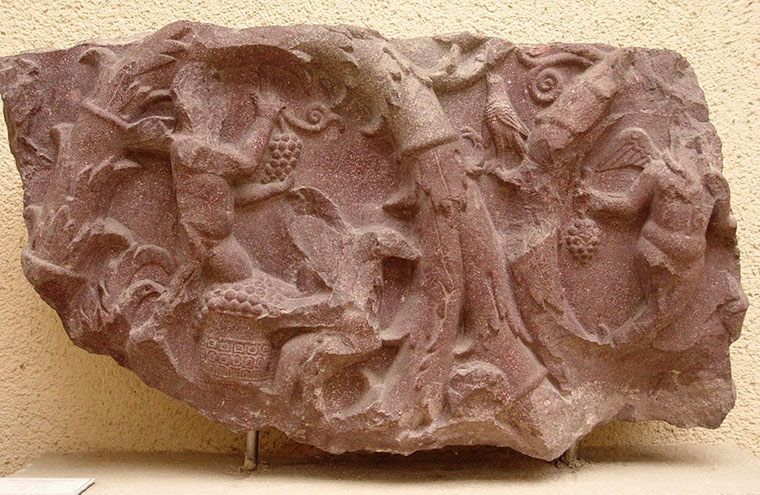 It is possible the rounded tomb belongs to Julian.
It is possible the rounded tomb belongs to Julian.
The following is a list of the Emperors (and one Empress) who were were buried in their own porphyry tombs. Eight porphyry sarcophagi have survived in Istanbul today:
I. Constantine I - called the Great (306-337)
2. Constantius II (337-361)
3. Julian - called the Apostate (360-363)
4. Jovian (363-364)
5. Valentinian II (364-375)
6. Theodosius I - called the Great (379-395)
7. Arcadius (395-408)
8. Eudoxia, the wife of Arcadius, in her own tomb
9. Theodosius II (408-450)
10. Marcian (450-457)
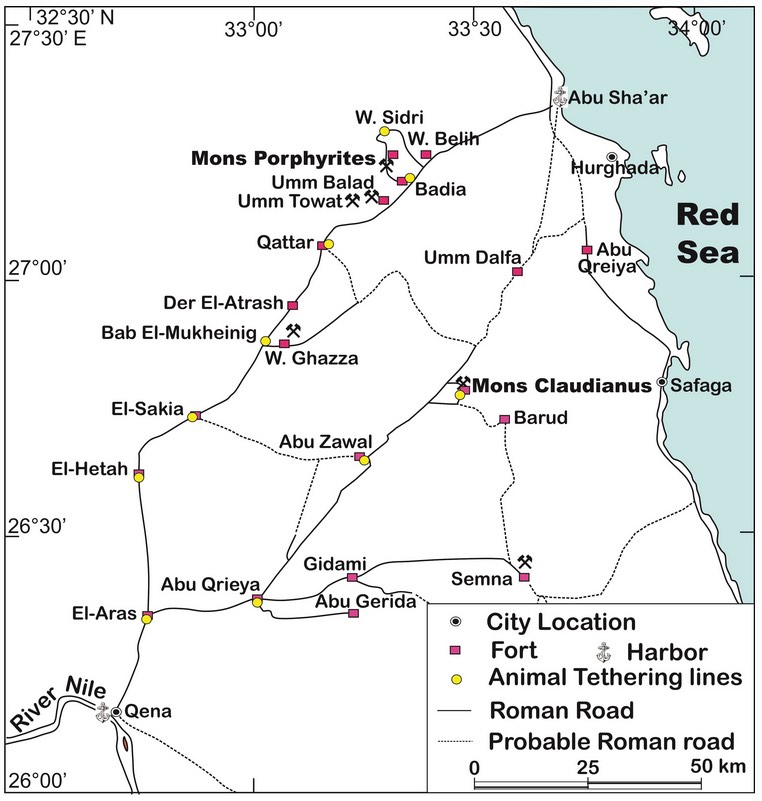 They were produced in state-owned and operated quarries in Egypt you can see a map above. Animal tethering lines show the path taken by oxen who pulled things from the quarries either to the Nile port or the one on the Red Sea. Only the Nile port could be used for shipments to Rome or Constantinople, since the Red Sea was cut off from the Mediterranean.
They were produced in state-owned and operated quarries in Egypt you can see a map above. Animal tethering lines show the path taken by oxen who pulled things from the quarries either to the Nile port or the one on the Red Sea. Only the Nile port could be used for shipments to Rome or Constantinople, since the Red Sea was cut off from the Mediterranean.
The quarries produced all sorts of things like columns, panels, statues, vases, bases and other building materials. These things were either completed in Egypt or shipped to Rome and Constantinople for final finishing. They went by ship. The workers in porphyry could have traveled with them and completed polishing and even done final carving onsite. Transportation was dangerous and many things arrived damaged or broken. Porphyry is very hard and difficult to cut, carve or polish, it requires special tools and techniques to be used.
The quarries were in the process of making several Imperial tombs at a time. It was a standard yearly order. I have no idea how long it took to produce one. Some of them are more hollowed out than others - that would take more time. Having elaborate carving only happened a few times for Constantine and his family. Later tombs are simpler. Production at the quarries slowed down and eventually stopped. The use of slaves in production might not have been a factor, since the workers were paid and worked seasonally. Some sort of economic disruption or climate change must have been the chief factors. Perhaps transportation was disrupted. The experts are baffled.
Constantine would have been very involved in the design of his own tomb as it would have been the centerpiece of his mausoleum. He was following in the tradition of Roman emperors like Augustus and Hadrian, who built massive and overpowering monuments to house their ashes. Like those Constantine's Heroon was built on the top of a ridge that ran right along the center of the city. It was round, domed and colonnaded, surrounded by a square colonnade. It had a bronze-tiled roof like the Pantheon in Rome. The interior was screened with gilt-bronze grills. Inside the walls were encrusted with colored marbles and the dome was coffered and gilded.
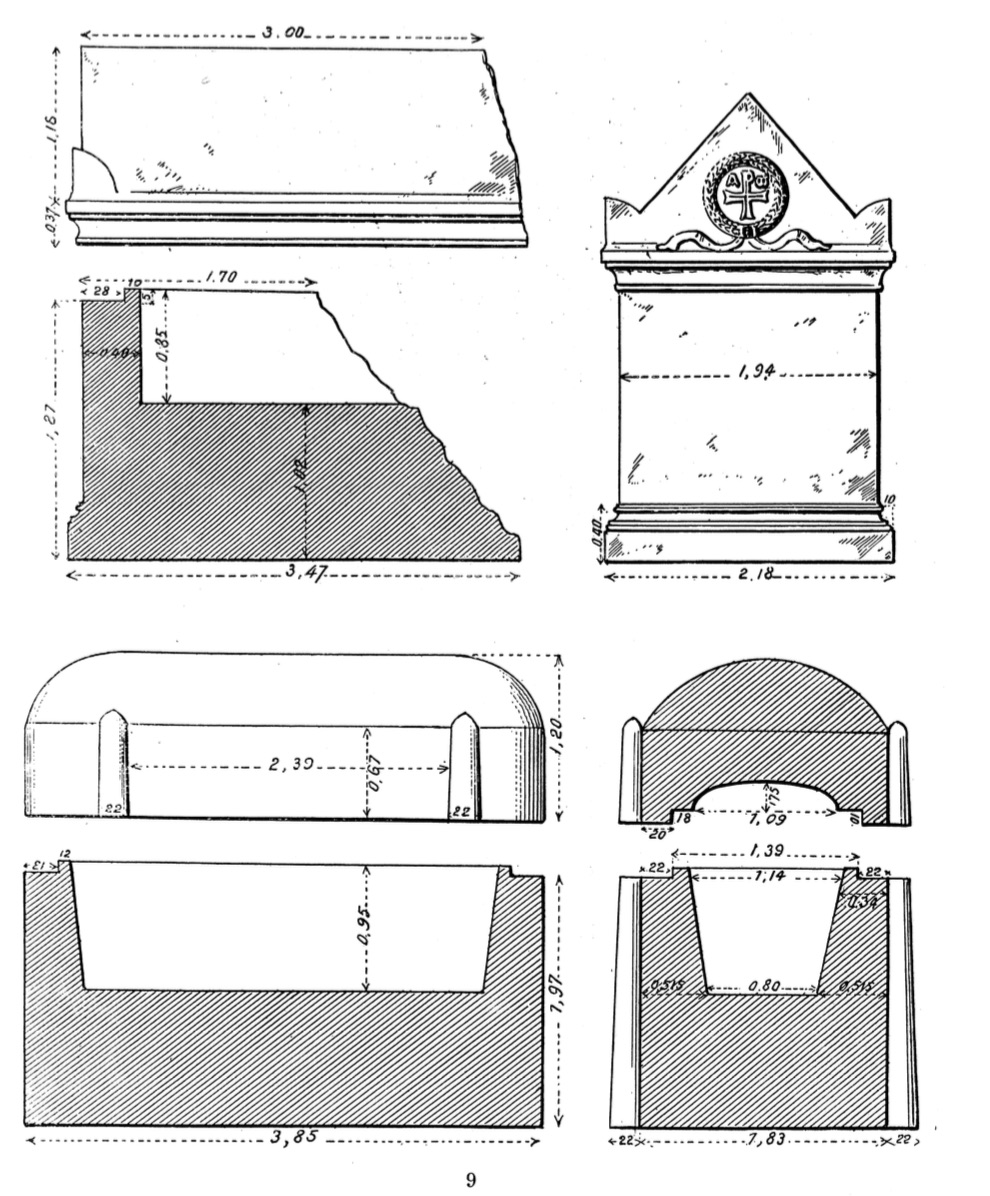 Above you can see how the cavities in the tombs carved out for the bodies were shallow. There seems to be hardly any room in there.
Above you can see how the cavities in the tombs carved out for the bodies were shallow. There seems to be hardly any room in there.
Once the tombs reached Constantinople it took huge numbers of oxen to move them from the harbor up two hills to their destination at Constantine's new mausoleum. It was a public spectacle that crowds of people watched. Constantine also moved seven huge, ten foot tall circular porphyry blocks for his column in the forum he named for himself. Each block was about the size of a tomb.
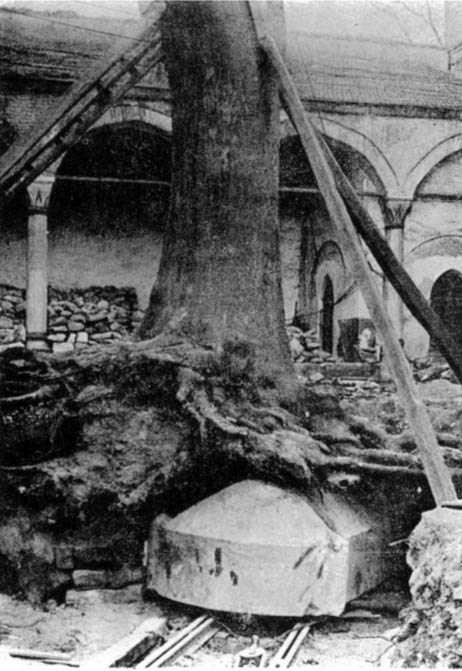 On the left you can see the lid of the tomb of Julian being discovered in 1916 beneath a tree in a court of the Old Seraglio. Two lids were found at the same time by the Administration of the Ottoman (now Archeological) Museum.
On the left you can see the lid of the tomb of Julian being discovered in 1916 beneath a tree in a court of the Old Seraglio. Two lids were found at the same time by the Administration of the Ottoman (now Archeological) Museum.
Lists of items in the quarries or in port were sent to Constantinople by local officials so that government builders and engineers knew what was available for new building projects and what was in production. Much of the porphyry ended up stock-piled in marble yards in Constantinople. By the reign of Justinian these supplies were exhausted by the building of Hagia Sophia. Plague and warfare reduced the workforce and shut down the pipeline of new marbles.
The Orthodox Church does not allow people to be buried in churches - meaning the main nave where the liturgy is performed. This rule was always being pushed to the limit in Byzantium. If they couldn't be buried in the nave rich people and emperors built chapels or buried people in ambulatories that wrapped around the sanctuaries. They believed their souls would benefit from the continuous celebration of the liturgy and the prayers of the monastics and visitors. That's a major reason rich people built monasteries, so they could bury themselves and their families within them. Placing one's tomb close to the relics of important saints - like the Church of the Holy Apostles - meant increased traffic and more prayers. The people of Constantinople would frequently visit the Heroons of the Holy Apostles. They knew all of the stories associated with this or that emperor or empress and would teach their kids about their history and heritage this way. The Heroons of the Holy Apostles were set in beautiful gardens with grassy meadows, flowery trees and plants, there were fountains which made them even more popular destinations for family outings.
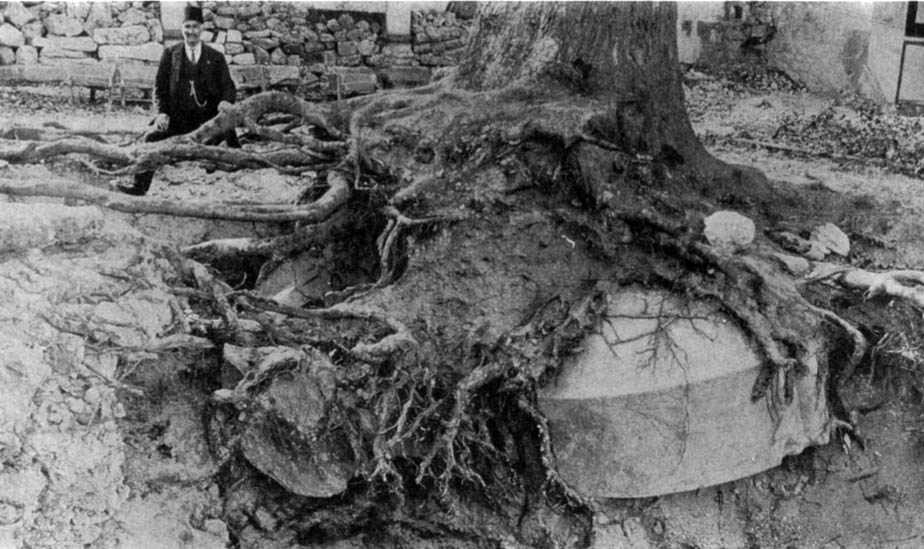 Above is another view of the excavation of the tombs in 1916. The ancient plane tree was saved.
Above is another view of the excavation of the tombs in 1916. The ancient plane tree was saved.
In Constantinople the emperors went to great lengths to protect their earthly remains and immortalize themselves and their families in public settings. There were 94 Byzantine Emperors who reigned over a period of 1123 years. Around 10% of their sarcophagi have survived. Despite the enormous efforts they took only one Byzantine emperor was found in his own tomb, Andronikos II Palaeologus, who reigned from 1282 to 1328. He was was interred beneath the floor of a small ruined church. He had been missed because his grave made a solid level of mortar topped by a marble opus sectile floor and was right in front of the main entrance to the church. Anyone entering the sanctuary (or the mosque in its later days) walked right over him. He was buried in a simple wood coffin set inside a marble-lined cavity that was topped by a marble plaque that had no inscription. The simplicity of his grave reflects the fact that before his death in 1332 he had become a monk living in poverty named Anthony.
Why were all but one of the graves of the Byzantine emperors destroyed? In 1453 Christian Constantinople was conquered by the Islamic Ottoman Turks. Over a period of several hundred years they either destroyed or converted into mosques virtually all of the churches in the city. Along with all of the Christian furnishings that were used in worship services and their decoration, the Ottomans cleared out all of the tombs and burials they could find. The only reason Andronikos II was safe in his tomb (to be found by archaeologists in the 1950's) was because he had been overlooked beneath the floor of the narthex of a church that burned and his grave was concealed underneath a layer of debris. Several of his family members were found with him. 1453 represented the absolute end of a world civilization that was wiped out by a conqueror of a different religion. Imagine what would have happened to Italy or France if they experienced Byzantium's fate and had been conquered by Islam. There would be almost nothing left of western Christian culture in Paris, Rome or Florence; all of their churches would be mosques, all of the castles, statues and palaces would be gone. This is something to reflect upon as one looks at the sad broken and empty tombs of the Eastern Roman Emperors who once ruled a good part of the western world for a very long time. Since all but one of the Emperors were Christian their burials were in anticipation of the Parousia, the Second Coming of Christ, which would begin in the east, and during which all the dead would be called from the tombs and their “hope for the resurrection of the dead". Prayers continued to be said over their tombs for over a thousand years and their bodies were lain facing east in anticipation of it.
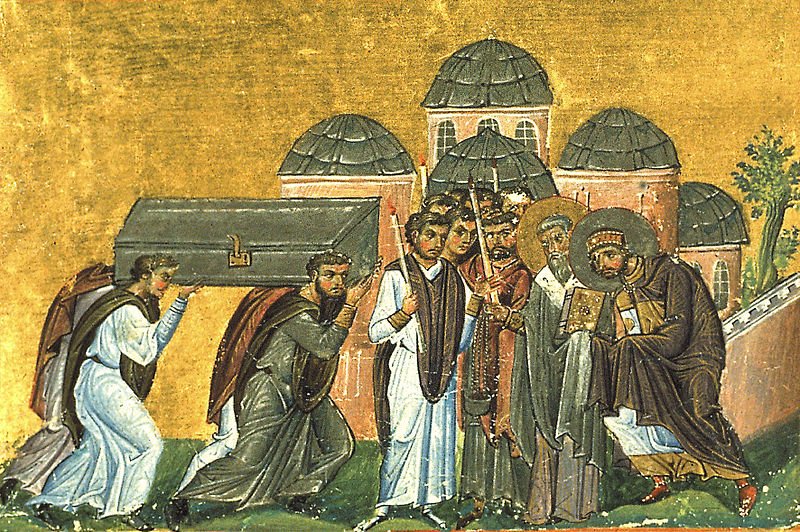 Above is an illustration of the five-domed Church of the Holy Apostles from the Menologian of Basil II which is now housed in the Vatican.
Above is an illustration of the five-domed Church of the Holy Apostles from the Menologian of Basil II which is now housed in the Vatican.
There were two mausoleums - Heroons - at the Church of the Holy Apostles. Building Heroons is a very old practice which dates from ancient Greece and Rome. The southern one was dominated by the enormous tomb of Constantine I which was built by his son Constantius II. The three principal tombs in the mausoleum of Constantine were those of Constantine himself, Constantius II, Jovian and his wife Charito, Valentian I and his wife Servea, Theodosius I and his wife Flacilla, Arcadius and his wife Eudoxia. Next it received in succession the tombs of Pulcheria and Marcian, Leo I and Verina, Zeno (A voice was heard from his tomb for three days afterwards crying "Have pity on me") , and Anastasius I (killed by a lightning bolt during a violent thunderstorm that hit him or the palace, he might have died of fright) and his wife Adriane. Finally it became the dynastic mausoleum of the Macedonian dynasty beginning with Basil I and ending in 1028. There were 20 tombs in all, some containing multiple bodies. Not all of them were made of porphyry. The Macedonians buried here were the following; Leo VI, with Constantine VII, Constantine, son of Basil I, Theophano, first wife of Leo VI, with her daughter Eudocia, Zoe, second wife of Leo VI, Eudocia, third wife of Leo VI, two Annas, daughters of Leo VI, Basil, son of Leo VI, and Bardas, son of Basil I , Romanus II, Nicephorus Phocas, Theophano, wife of Romanus II, and Constantine VIII. All of the Red Porphyry tombs were in the mausoleum of Constantine.
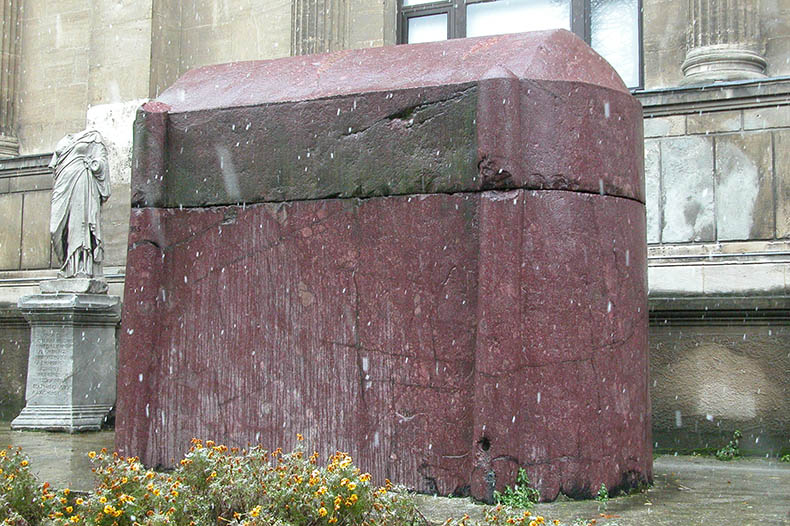 The tomb above is most likely that of Julian, it's the largest. All of the pictures on this page were taken in the rain - hence the spots. One can see the places - especially in the corners - where the tombs were damaged when they were pried open by vandals searching for treasures. One scholar, Delbrueck, believes this porphyry tomb came from Alexandra and had originally been used for the burial of one of the the Ptolemaic Kings or Queens of Egypt. This one has no crosses on it and is the largest.
The tomb above is most likely that of Julian, it's the largest. All of the pictures on this page were taken in the rain - hence the spots. One can see the places - especially in the corners - where the tombs were damaged when they were pried open by vandals searching for treasures. One scholar, Delbrueck, believes this porphyry tomb came from Alexandra and had originally been used for the burial of one of the the Ptolemaic Kings or Queens of Egypt. This one has no crosses on it and is the largest.
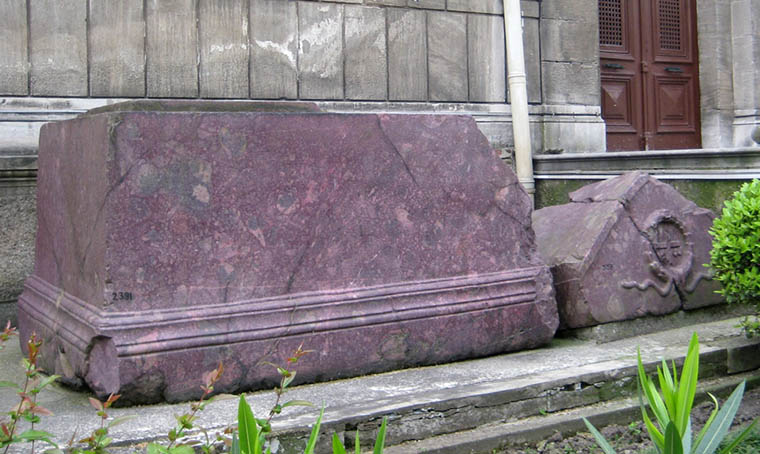 The second, northern mausoleum was built by Justinian I (527-565) in cruciform shape, which was in turn dominated by his tomb in the apse. He built the second mausoleum at the same time as he rebuilt the Church of the Holy Apostles as a cruciform domed church. Justinian lived a very long time - into his 80s - so he had long time to contemplate his tomb before he was put in it. His mausoleum housed most of the emperors and many of their empresses until Michael II in 829 when it was full to capacity. The most important occupants were Justinian I, his wife Theodora, Justin II, Heraclius, Leo IV and his wife Eirene, Constantine V, and Theophilus and his family. Almost all of these tombs were carved from big blocks of either green Verde Antico or white Proconnesian marble. Red Porphyry was no longer being quarried.
The second, northern mausoleum was built by Justinian I (527-565) in cruciform shape, which was in turn dominated by his tomb in the apse. He built the second mausoleum at the same time as he rebuilt the Church of the Holy Apostles as a cruciform domed church. Justinian lived a very long time - into his 80s - so he had long time to contemplate his tomb before he was put in it. His mausoleum housed most of the emperors and many of their empresses until Michael II in 829 when it was full to capacity. The most important occupants were Justinian I, his wife Theodora, Justin II, Heraclius, Leo IV and his wife Eirene, Constantine V, and Theophilus and his family. Almost all of these tombs were carved from big blocks of either green Verde Antico or white Proconnesian marble. Red Porphyry was no longer being quarried.
There was one tomb in a beautiful crystalline white Docimian onyx marble made for Heraclius (610-641). This tomb, which was discovered in 1969, is now in the sculpture garden of the Archaeological Museum. When it was discovered it was covered with graffiti in Greek, which means it had been concealed somewhere since 1460, when Holy Apostles was torn down. It had been in the mausoleum of Justinian. About 1/4 had broken off and the top is missing. You can see it below. There are bands of this onyx in Hagia Sophia.
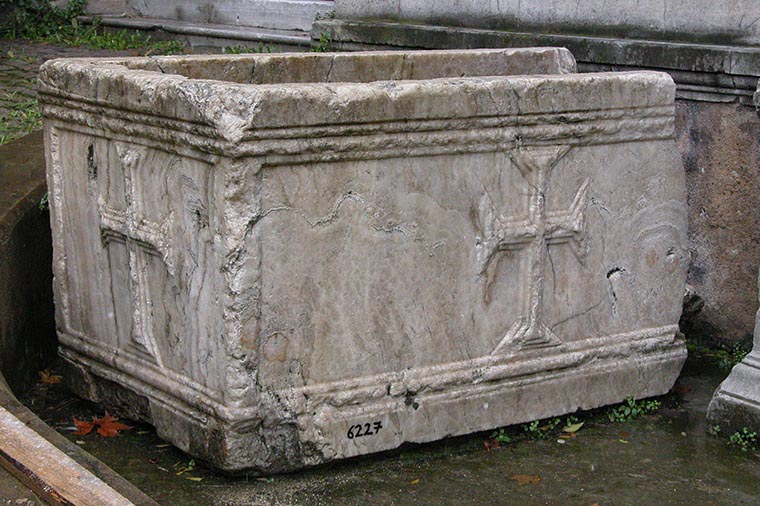
The tomb of Anastasius (491-518), was carved in the black white veined Celticum marble, "petit antique", from area around St. Girons Hèche and Hèchettes, in Hautes-Pyrénées, France. It is also called "bianco e nero antico". It has never been located. This marble was also used on the walls of Hagia Sophia by Justinian.
After their funeral service emperors and empresses were placed in decorated lead inner coffins and these were then placed into their stone sarcophagi. Their tombs were decorated with icons and candles. Empress Zoe's tomb was embellished with ornaments in silver-gilt. The two tombs were located in beautiful public gardens, orchards and fields that surrounded the church. They were open to the public and a part of the "circuit" of Holy Apostles. Families with children used the gardens and the tombs for leisure activities. They also taught their children the history of Byzantium through stories of the emperors and empresses buried here.
In 1195 the emperor Alexios III Angelos was forced to pay the German Emperor Henry VI Hohenstaufen a vast sum of money as extortion to call off an attack on Constantinople. He levied a "German" tax on the people, but not enough money could be raised fast enough. He then looted the Imperial mausoleums of their silver, which was used in the railings, chandeliers, candlestands and other furnishings. From this effort he melted down and turned over to Henry 7,000 lbs of silver, worth around $2 million today.
Sometime after 1204 all of the tombs were broken into and their bodies robbed of valuables by the Latin emperors. It would have been difficult to maneuver around the tombs in the mausoleums, which were crowded with many tombs, some of which were in niches. They would have needed space to slide or get the tops off of them. Getting through all of the tombs would have taken a long time. The crusaders found some of the bodies, like Justinian I, in their tombs perfectly preserved. Some were still wearing crowns and jewels, probably made of tinsel and glass. Think of the disappointment the thieves felt when they discovered the 'treasures' were worthless baubles. Even their burial shrouds and clothes were torn off and stripped of gold thread. The ancient purple-colored silk was sold to be unwoven and reused. The tombs had silver ornaments on them that were pulled off and melted down. The silver coverings of the icons, silver hanging-lamps and candle stands were melted down for coin.
The historian Niketas Choniates tells us more:
"Exhibiting from the very outset, as they say, their innate love of gold, the plunderers of the queen city conceived a novel way to enrich themselves while escaping everyone's notice. They broke open the sepulchers of the emperors which were located within the Heroon erected next to the great temple of the Disciples of Christ [Holy Apostles] and plundered them all in the night, taking with utter lawlessness whatever gold ornament, or round pearls, or radiant, precious, and incorruptible gems that were still preserved within. Finding that the corpse of Emperor Justinian had not decomposed through the long centuries, they looked upon the spectacle as a miracle, but this in no way prevented them from keeping their hands off the tomb's valuables: In other words, the Western nations spared neither the living nor the dead, but beginning with God and his servants, they displayed complete indifference and irreverence to all"
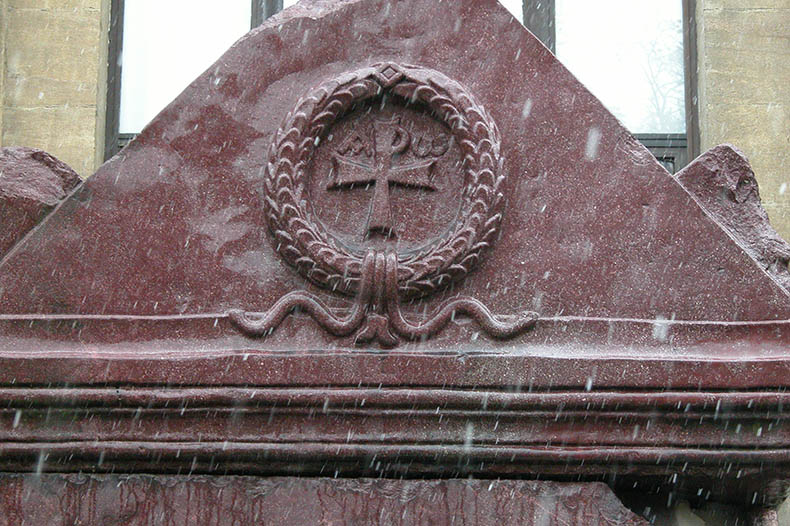 The Latin emperors had no income and had to turn to selling the lead sheeting off of the roofs churches, palaces and public buildings. Baldwin, the last Latin Emperor was called "the Broke", because he never had any money to pay his bills. He left many of the buildings of Constantinople to collapse after their roofs were gone. He did manage to keep the imperial crown and scepter that his forebears had taken in 1204. He was surprised by the sudden and unexpected recapture of the city by Byzantine soldiers and had to flee leaving them behind in the Blachernae Palace.
The Latin emperors had no income and had to turn to selling the lead sheeting off of the roofs churches, palaces and public buildings. Baldwin, the last Latin Emperor was called "the Broke", because he never had any money to pay his bills. He left many of the buildings of Constantinople to collapse after their roofs were gone. He did manage to keep the imperial crown and scepter that his forebears had taken in 1204. He was surprised by the sudden and unexpected recapture of the city by Byzantine soldiers and had to flee leaving them behind in the Blachernae Palace.
After the Latins were expelled the Emperor Michael VIII Palaeologus put the tombs in order, placing the tops back on and generally cleaning things up. He erected a tall column in front of the church with a statue of himself offering a model of the church to the Archangel Michael. This was the last honorific column to be set up in the city. He planned to continue the practice of the past and place his own his tomb here, but he died in disgrace because he forced the union of the churches on his people. They never forgave him for it. He continued to reign and did the best job he could as emperor. When he died no church was willing to accept his remains and no Orthodox priest would give him a religious burial. He died at the age of 58 in 1252 while on a military campaign in the town of Pachomios and his body was abandoned. His son Andronikos II, ever the coward, had his body covered by a mound of earth to save it from being torn apart by wild animals. Some years later, when memories of his mistakes had faded, his remains were quietly moved to a monastery in Selymbria on the Sea of Marmora. His remains never made it to the Church of the Holy Apostles
After 1453 the Orthodox Patriarch Gennadius was ejected from Hagia Sophia, which had just been converted into a mosque, and he was moved by the order of the sultan in the Church of Holy Apostles, which was in bad shape. After 1453 all of the buildings - including churches - became the personal property of the Islamic sultan, who could do what he wanted with them. The neighborhood where the church stood was now to be settled with Muslims and the patriarch was made to feel he wasn't safe here. The church was in a prominent position on top one of the hills of the city and quickly became a target of Muslim extremists. A dead body was left in the church as a warning that he should find somewhere else to perform the Liturgy. The roof and some of the vaults appeared near to collapse, but no repairs to the church were permitted. Mehmet could have made the repairs and left the second largest church for the Christians as a prominent monument to his benevolence and his commitment to a multi-religious empire. Instead after a few months the patriarch was moved to much smaller church in an area that would become a Christian quarter called the Phanar. Christians were then required to wear certain clothes and colors so they could be easily identified. Henceforth they, along with the Jews, would pay a special tax. Finally the church, Michael's column and the mausoleum were demolished by Mehmet II and a mosque was built on the site.
Mehmet, following Byzantine Imperial tradition, was buried there in a new mausoleum in the same location overlooking the city.
The former tombs were moved around city as curiosities or as future building supplies. Three of them were found in the 3rd court of the Seraglio and these were taken to the Archaeological Museum. The small fragment of a possible 9th Porphyry tomb was found at the Seraglio Point in 1921, but it could have just been a piece of Porphyry molding from a building. In the 19th century two more sarcophagi were discovered in the vicinity of Hagia Sophia and taken to Hagia Eirene, where they still are in the atrium. Some of these sarcophagi were broken into pieces and tops and bottoms of tombs became separated from one another. Below is a picture of one of the two tombs in Hagia Eirene. Notice the Egyptian ankh symbol of life with Constantine's chi-rho inside it. Cyril Mango believes this tomb was the earliest and belonged to Constantine.
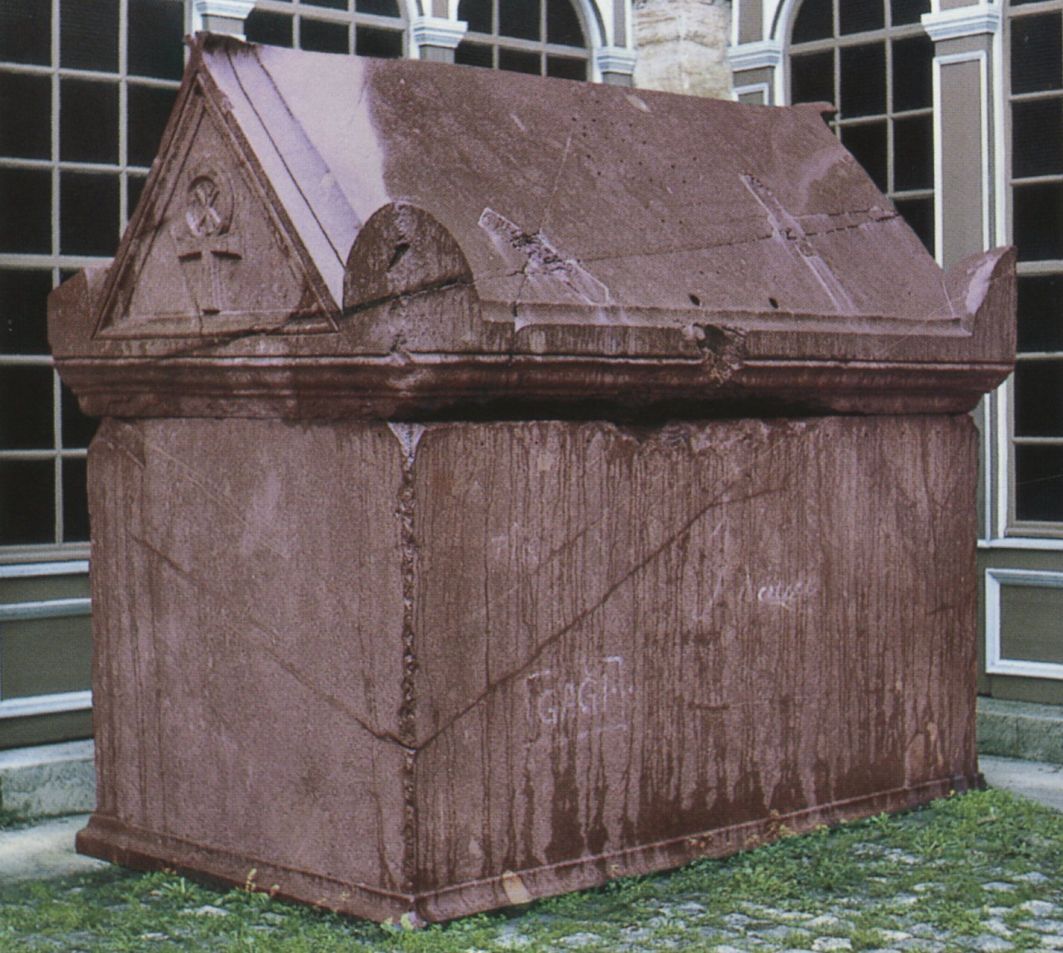
All of the green Verde Antico columns and other marble parts that were taken from the church were reused in other Ottoman building projects around the city. The Ottomans did not make any new columns and recycled them. They did not like to reuse Byzantine capitals in their original form and recut them into new Ottoman forms.
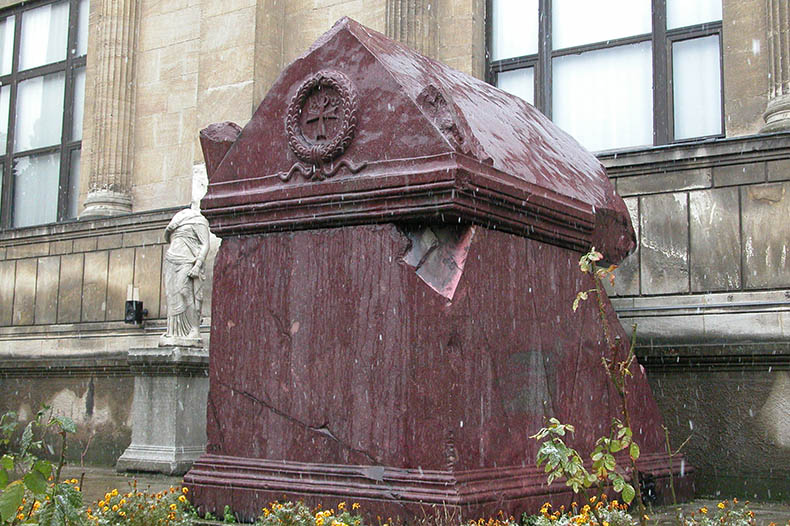
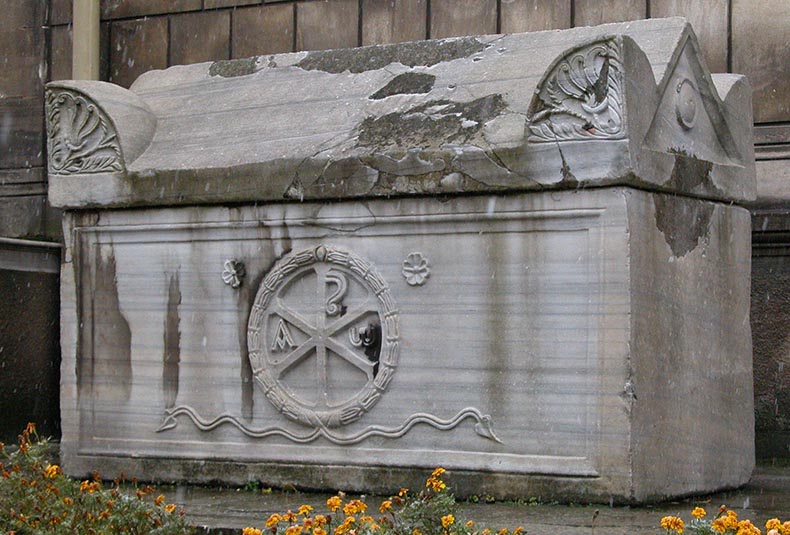 Above is a gabled tomb in white Proconnesian marble. It has the chi-rho cross of Constantine the Great within a laurel leaf wreath tied with a ribbon or vine with a leaf on the end. You can see where it was opened or tunneled into on the right side. This could have been a hole that a child or small person would have used to crawl into it and root around for treasures.
Above is a gabled tomb in white Proconnesian marble. It has the chi-rho cross of Constantine the Great within a laurel leaf wreath tied with a ribbon or vine with a leaf on the end. You can see where it was opened or tunneled into on the right side. This could have been a hole that a child or small person would have used to crawl into it and root around for treasures. 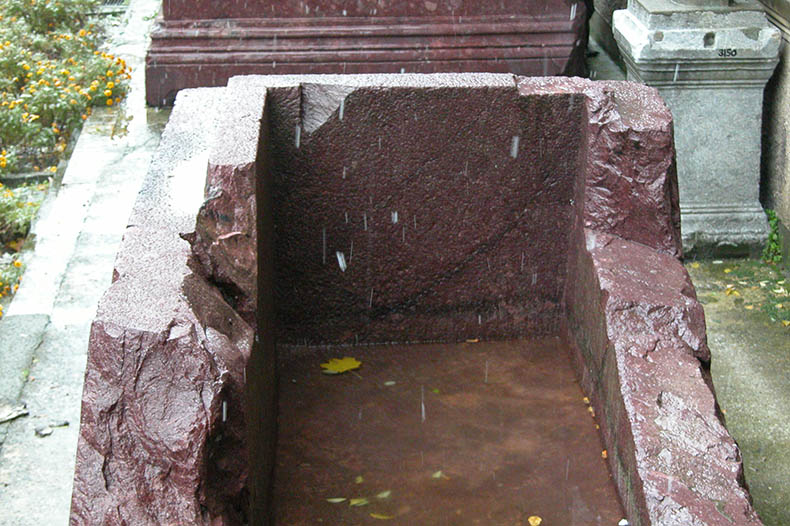 This tomb, now to be seen in the narthex of Hagia Sophia, was thought to have been the resting place of Empress Eirene, wife of John Komnenos in the Heroon of the Pantokrator because it was found abandoned outside of the church. It turns out it is too large to have fit through the doors of the Pantokrator and must have come from the nearby site of the Holy Apostles. After Mehmet II demolished it the tomb found its way there. Could it have belonged to Justinian or Theodora? We know Justinian liked green Verde Antico and used it all over Hagia Sophia
This tomb, now to be seen in the narthex of Hagia Sophia, was thought to have been the resting place of Empress Eirene, wife of John Komnenos in the Heroon of the Pantokrator because it was found abandoned outside of the church. It turns out it is too large to have fit through the doors of the Pantokrator and must have come from the nearby site of the Holy Apostles. After Mehmet II demolished it the tomb found its way there. Could it have belonged to Justinian or Theodora? We know Justinian liked green Verde Antico and used it all over Hagia Sophia
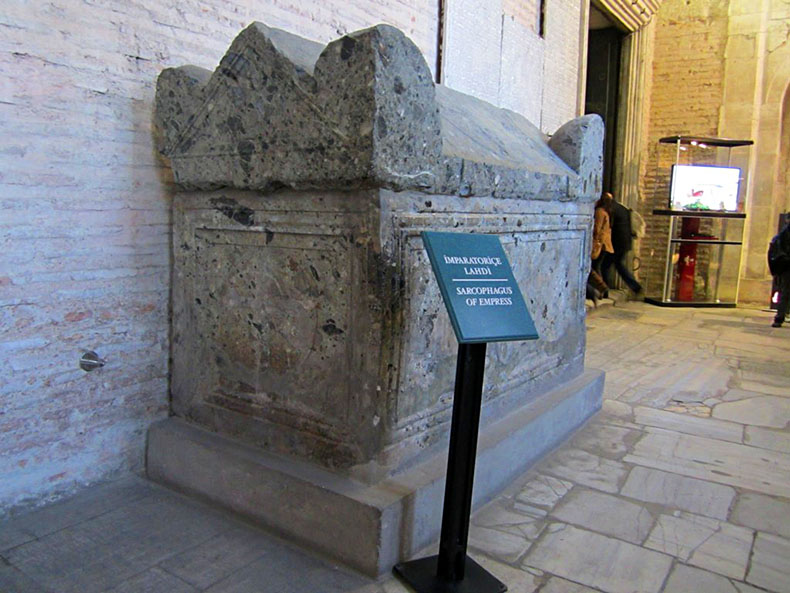 Another famous tomb that was probably in Holy Apostles is the Sariguzel sarcophagus which must have been made for a Theodosian princess around 390. Bente Kiilerich has speculated that it was made for Theodosis's daughter Pulcheria, who died when she was seven years old. Gregory of Nyssa delivered her funeral oration. There as a public funeral procession the day before through the streets of Constantinople. It was found 500-600 meters downhill from the site of the Holy Apostles.
Another famous tomb that was probably in Holy Apostles is the Sariguzel sarcophagus which must have been made for a Theodosian princess around 390. Bente Kiilerich has speculated that it was made for Theodosis's daughter Pulcheria, who died when she was seven years old. Gregory of Nyssa delivered her funeral oration. There as a public funeral procession the day before through the streets of Constantinople. It was found 500-600 meters downhill from the site of the Holy Apostles.
There are three pictures of it below. This sarcophagus in probably in Constantine's Mausoleum, on public view and was greatly admired for its beauty. It was copied a number of times for other princesses, but never as lovely as this one. I think the angels are next to perfection. look how beautiful the at the bottom of the wreath is. We are lucky the original has survived in such beautiful condition. I would like to believe when the tombs were looted they passed over this one because it so beautiful. In Ottoman times, when the Church of the Holy Apostles and the two Heroons were demolished, someone must have taken pity on it and safely buried it in soft sandy soil some distance from the building site for the new mosque. Perhaps because it was small - made for a girl - it was easy to conceal.
The tomb was discovered in 1933 near Fenari Isa and had been reused, a skull was inside it and a new lid had been added.
Below the three images are pictures of two copies of it. It's a shame one has been left outside to decay in the acid-rain.
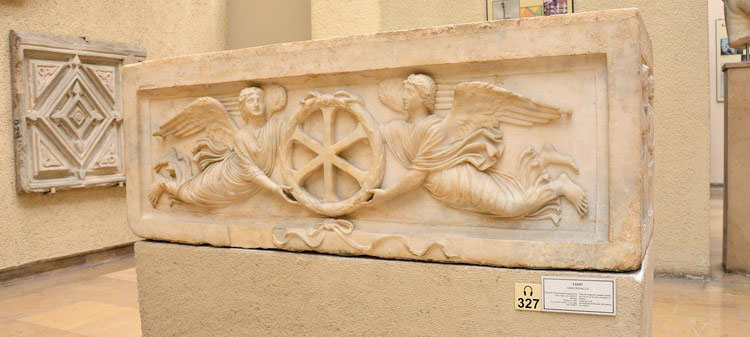
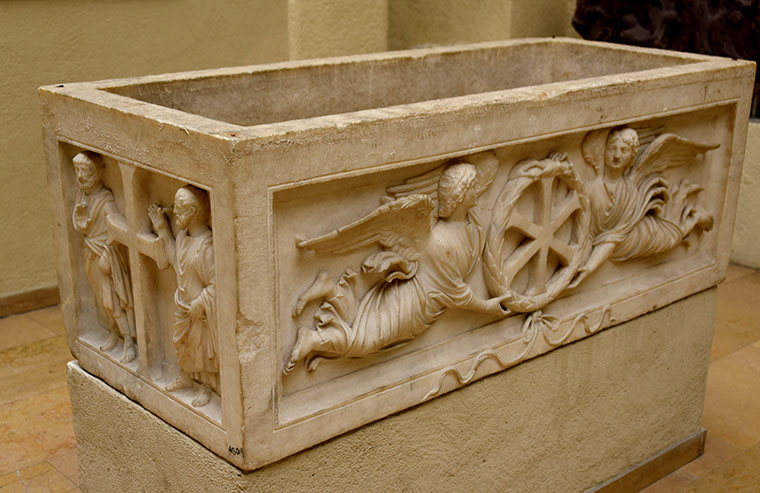
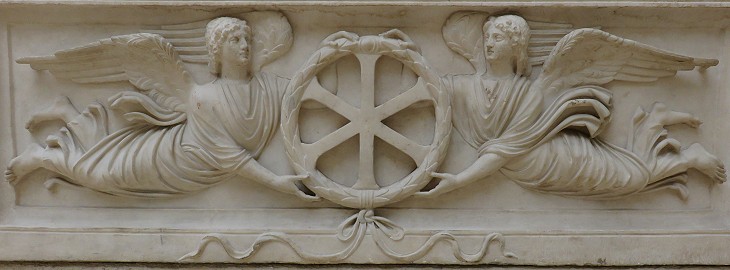
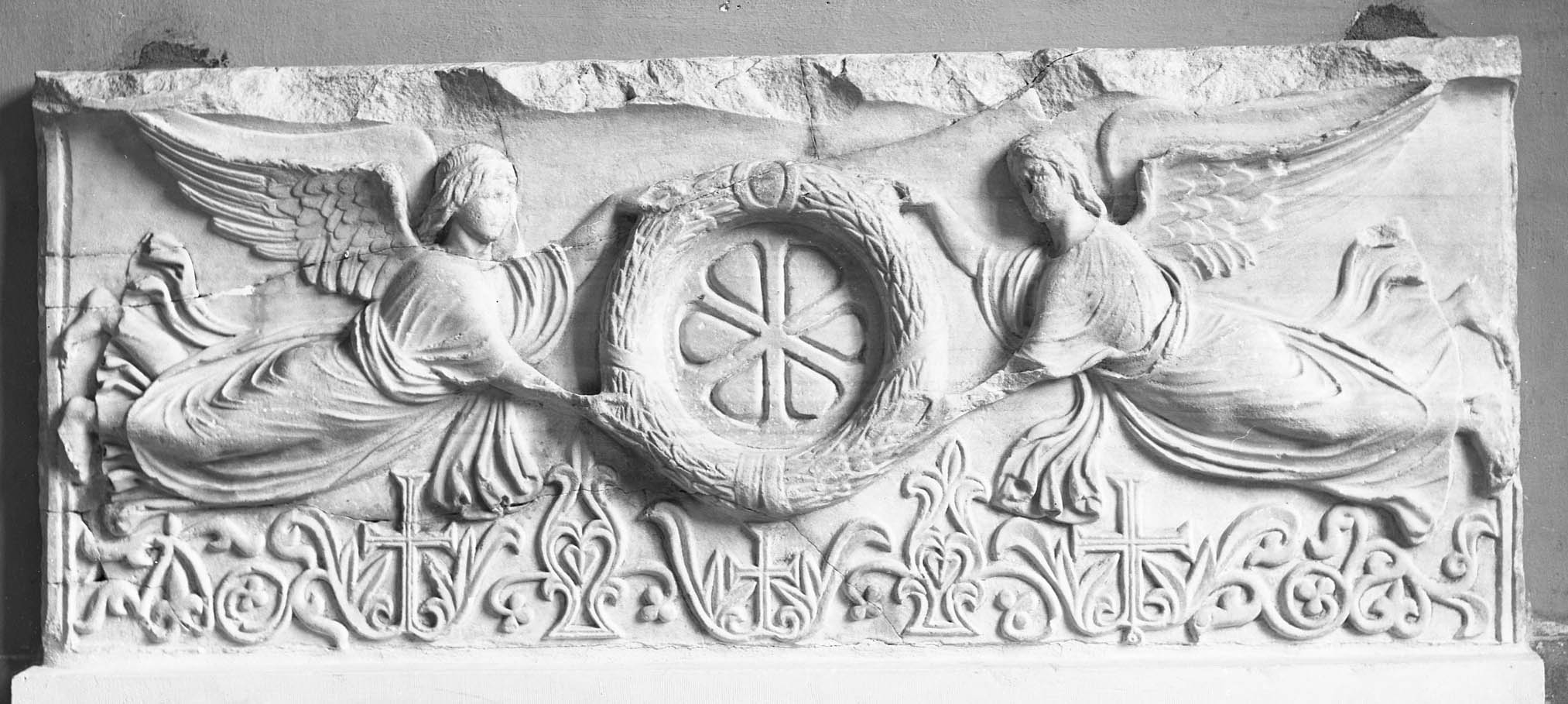
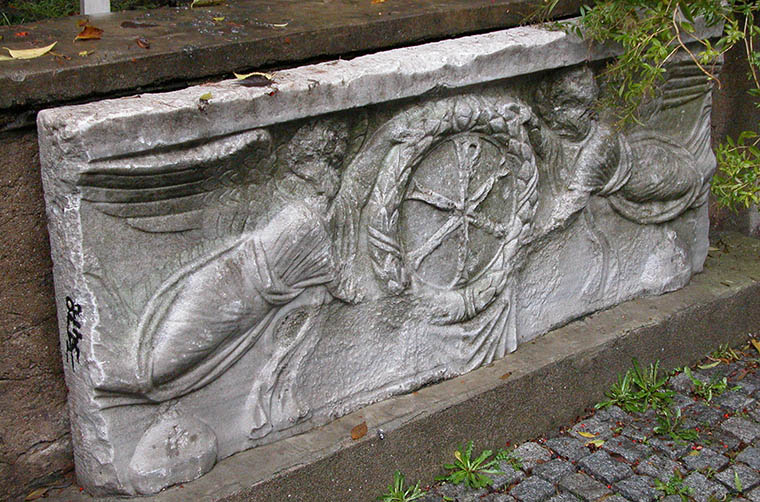
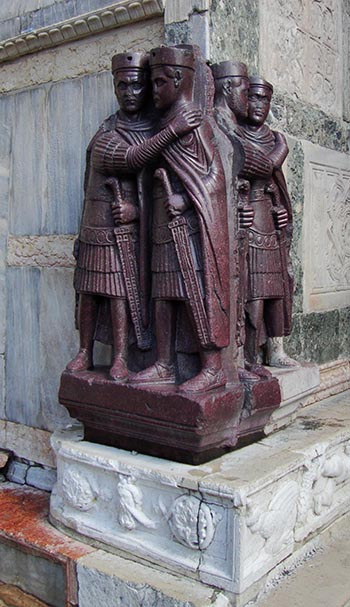 These figures were mounted on a tall column of Porphyry standing on a bracket. There were two columns. The other had another set of Tetrarchs, rulers of the Roman Empire. They were broken off of their column before being sent to Venice. The missing foot - seen in white - has been located in Istanbul recently.
These figures were mounted on a tall column of Porphyry standing on a bracket. There were two columns. The other had another set of Tetrarchs, rulers of the Roman Empire. They were broken off of their column before being sent to Venice. The missing foot - seen in white - has been located in Istanbul recently.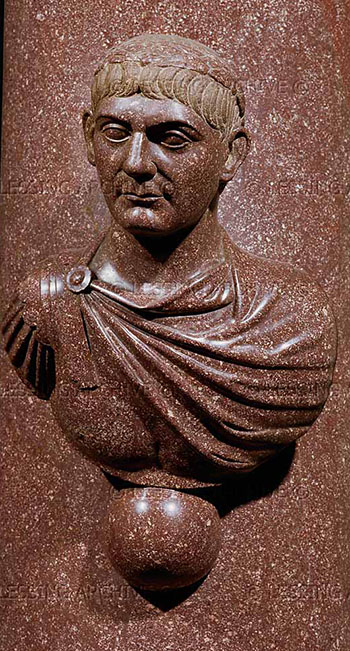 Above is another, earlier 2nd century Porphyry column with a mounted bust of Trajan. He is an emperor wearing a diadem, a jeweled circlet. It is one of a pair.
Above is another, earlier 2nd century Porphyry column with a mounted bust of Trajan. He is an emperor wearing a diadem, a jeweled circlet. It is one of a pair.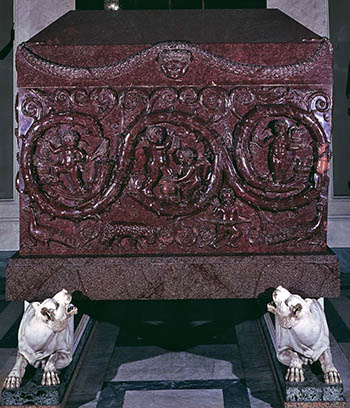
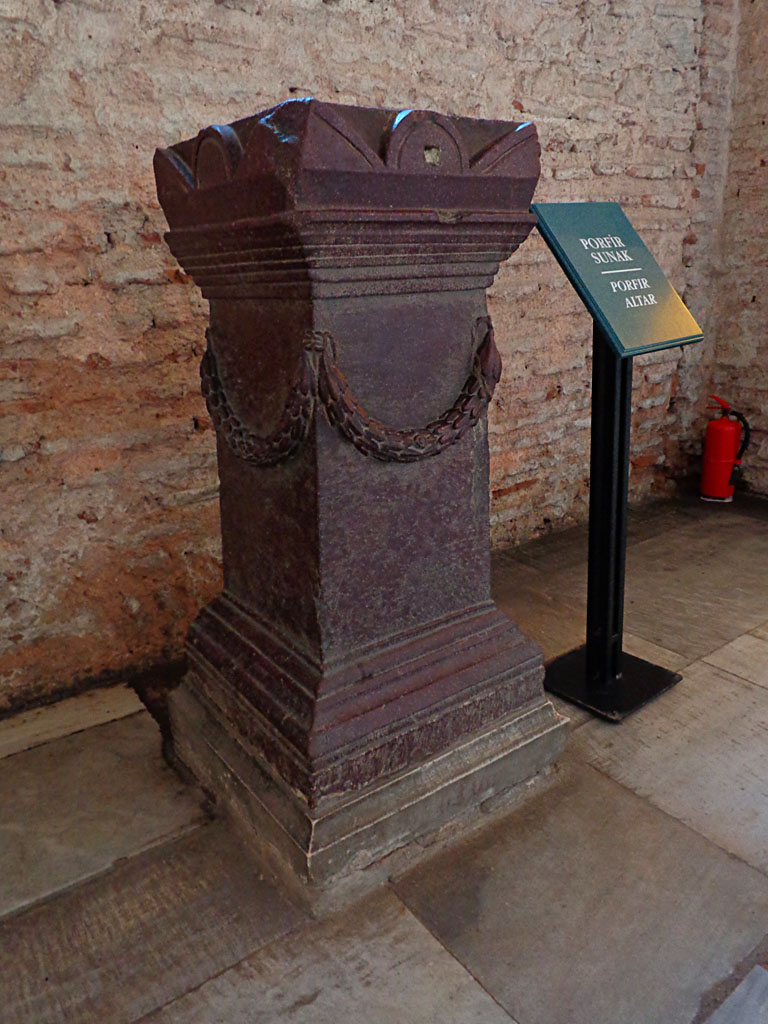
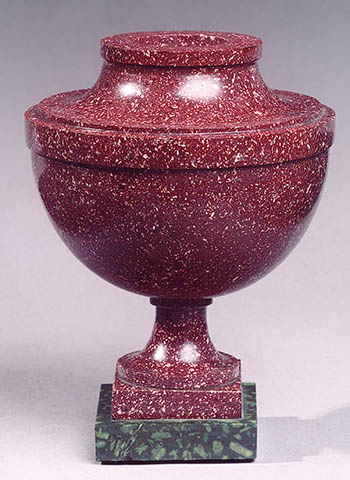
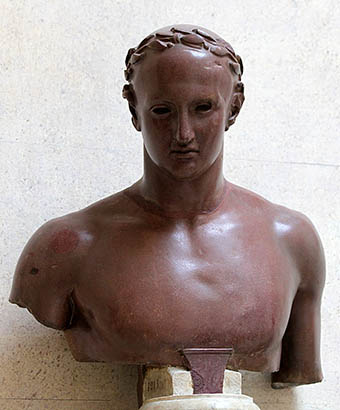
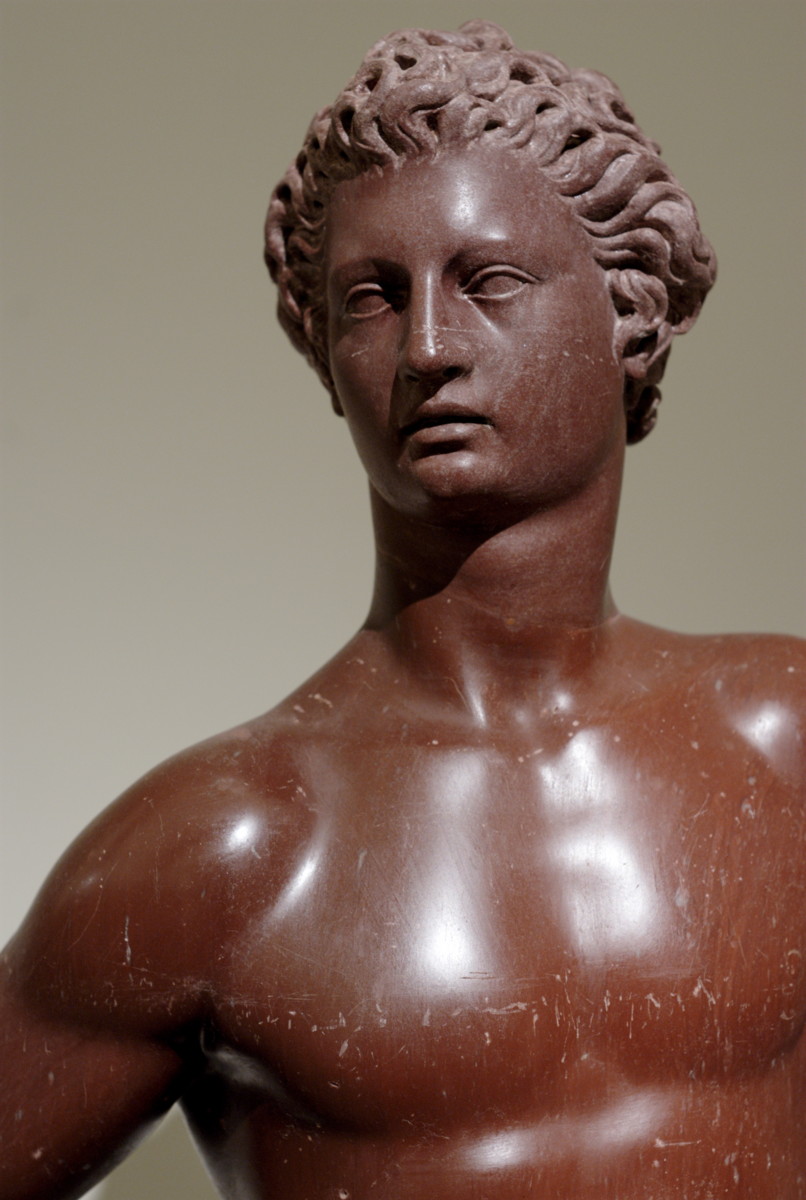
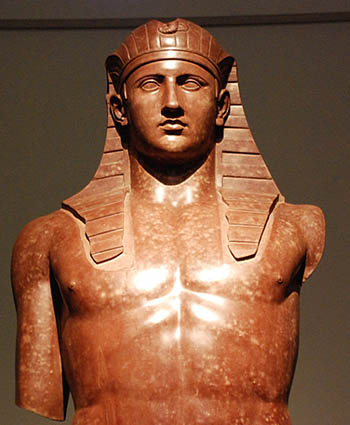



 It is possible the rounded tomb belongs to Julian.
It is possible the rounded tomb belongs to Julian. They were produced in state-owned and operated quarries in Egypt you can see a map above. Animal tethering lines show the path taken by oxen who pulled things from the quarries either to the Nile port or the one on the Red Sea. Only the Nile port could be used for shipments to Rome or Constantinople, since the Red Sea was cut off from the Mediterranean.
They were produced in state-owned and operated quarries in Egypt you can see a map above. Animal tethering lines show the path taken by oxen who pulled things from the quarries either to the Nile port or the one on the Red Sea. Only the Nile port could be used for shipments to Rome or Constantinople, since the Red Sea was cut off from the Mediterranean.



 The tomb above is most likely that of Julian, it's the largest. All of the pictures on this page were taken in the rain - hence the spots. One can see the places - especially in the corners - where the tombs were damaged when they were pried open by vandals searching for treasures. One scholar, Delbrueck, believes this porphyry tomb came from Alexandra and had originally been used for the burial of one of the the Ptolemaic Kings or Queens of Egypt. This one has no crosses on it and is the largest.
The tomb above is most likely that of Julian, it's the largest. All of the pictures on this page were taken in the rain - hence the spots. One can see the places - especially in the corners - where the tombs were damaged when they were pried open by vandals searching for treasures. One scholar, Delbrueck, believes this porphyry tomb came from Alexandra and had originally been used for the burial of one of the the Ptolemaic Kings or Queens of Egypt. This one has no crosses on it and is the largest. The second, northern mausoleum was built by Justinian I (527-565) in cruciform shape, which was in turn dominated by his tomb in the apse. He built the second mausoleum at the same time as he rebuilt the Church of the Holy Apostles as a cruciform domed church. Justinian lived a very long time - into his 80s - so he had long time to contemplate his tomb before he was put in it. His mausoleum housed most of the emperors and many of their empresses until Michael II in 829 when it was full to capacity. The most important occupants were Justinian I, his wife Theodora, Justin II, Heraclius, Leo IV and his wife Eirene, Constantine V, and Theophilus and his family. Almost all of these tombs were carved from big blocks of either green Verde Antico or white Proconnesian marble. Red Porphyry was no longer being quarried.
The second, northern mausoleum was built by Justinian I (527-565) in cruciform shape, which was in turn dominated by his tomb in the apse. He built the second mausoleum at the same time as he rebuilt the Church of the Holy Apostles as a cruciform domed church. Justinian lived a very long time - into his 80s - so he had long time to contemplate his tomb before he was put in it. His mausoleum housed most of the emperors and many of their empresses until Michael II in 829 when it was full to capacity. The most important occupants were Justinian I, his wife Theodora, Justin II, Heraclius, Leo IV and his wife Eirene, Constantine V, and Theophilus and his family. Almost all of these tombs were carved from big blocks of either green Verde Antico or white Proconnesian marble. Red Porphyry was no longer being quarried.
 The Latin emperors had no income and had to turn to selling the lead sheeting off of the roofs churches, palaces and public buildings. Baldwin, the last Latin Emperor was called "the Broke", because he never had any money to pay his bills. He left many of the buildings of Constantinople to collapse after their roofs were gone. He did manage to keep the imperial crown and scepter that his forebears had taken in 1204. He was surprised by the sudden and unexpected recapture of the city by Byzantine soldiers and had to flee leaving them behind in the
The Latin emperors had no income and had to turn to selling the lead sheeting off of the roofs churches, palaces and public buildings. Baldwin, the last Latin Emperor was called "the Broke", because he never had any money to pay his bills. He left many of the buildings of Constantinople to collapse after their roofs were gone. He did manage to keep the imperial crown and scepter that his forebears had taken in 1204. He was surprised by the sudden and unexpected recapture of the city by Byzantine soldiers and had to flee leaving them behind in the 

 Above is a gabled tomb in white Proconnesian marble. It has the chi-rho cross of Constantine the Great within a laurel leaf wreath tied with a ribbon or vine with a leaf on the end. You can see where it was opened or tunneled into on the right side. This could have been a hole that a child or small person would have used to crawl into it and root around for treasures.
Above is a gabled tomb in white Proconnesian marble. It has the chi-rho cross of Constantine the Great within a laurel leaf wreath tied with a ribbon or vine with a leaf on the end. You can see where it was opened or tunneled into on the right side. This could have been a hole that a child or small person would have used to crawl into it and root around for treasures.  This tomb, now to be seen in the narthex of Hagia Sophia, was thought to have been the resting place of Empress Eirene, wife of John Komnenos in the Heroon of the Pantokrator because it was found abandoned outside of the church. It turns out it is too large to have fit through the doors of the Pantokrator and must have come from the nearby site of the Holy Apostles. After Mehmet II demolished it the tomb found its way there. Could it have belonged to Justinian or Theodora? We know Justinian liked green Verde Antico and used it all over Hagia Sophia
This tomb, now to be seen in the narthex of Hagia Sophia, was thought to have been the resting place of Empress Eirene, wife of John Komnenos in the Heroon of the Pantokrator because it was found abandoned outside of the church. It turns out it is too large to have fit through the doors of the Pantokrator and must have come from the nearby site of the Holy Apostles. After Mehmet II demolished it the tomb found its way there. Could it have belonged to Justinian or Theodora? We know Justinian liked green Verde Antico and used it all over Hagia Sophia Another famous tomb that was probably in Holy Apostles is the Sariguzel sarcophagus which must have been made for a Theodosian princess around 390. Bente Kiilerich has speculated that it was made for Theodosis's daughter Pulcheria, who died when she was seven years old. Gregory of Nyssa delivered her funeral oration. There as a public funeral procession the day before through the streets of Constantinople. It was found 500-600 meters downhill from the site of the Holy Apostles.
Another famous tomb that was probably in Holy Apostles is the Sariguzel sarcophagus which must have been made for a Theodosian princess around 390. Bente Kiilerich has speculated that it was made for Theodosis's daughter Pulcheria, who died when she was seven years old. Gregory of Nyssa delivered her funeral oration. There as a public funeral procession the day before through the streets of Constantinople. It was found 500-600 meters downhill from the site of the Holy Apostles.








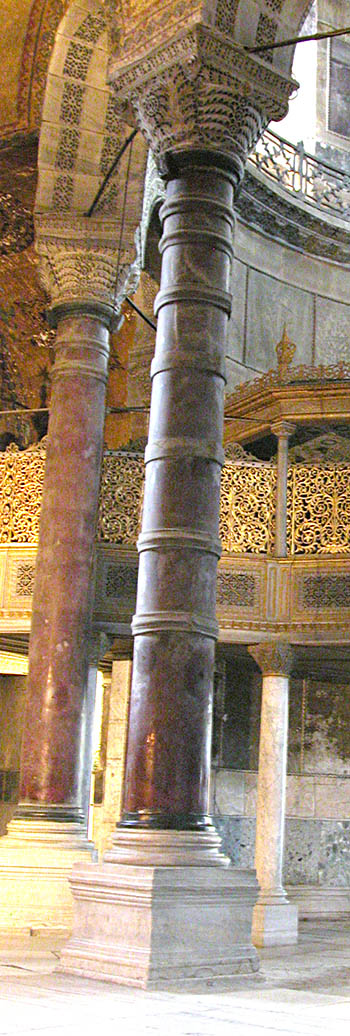
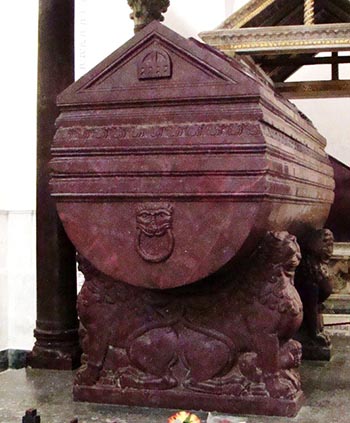
 click here for icons of christ
click here for icons of christ click here for icons of the theotokos
click here for icons of the theotokos click here for icons of angels
click here for icons of angels click here for icons of saints
click here for icons of saints








